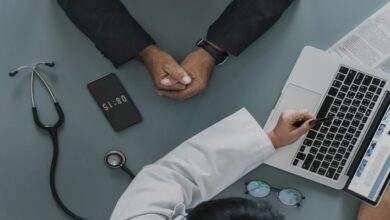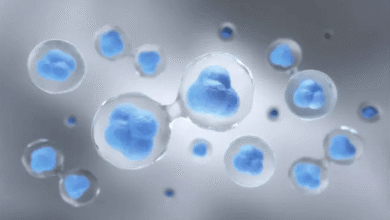Sampling with Precision: Gas and Biopsy in Endoscopic Practice

Endoscopy procedures have formed the basis of modern diagnostics and therapeutic interventions as it provides visual and physical access to the interior organs with minimal invasiveness. Among the many components that contribute to the efficacy of an endoscope, two critical yet distinct elements—the biopsy channel and gas cylinders—play essential roles in diagnostic accuracy and procedural safety.
The endoscope biopsy channel enables physicians to collect tissue samples for histological analysis, while gas cylinders, particularly those containing carbon dioxide (CO₂), facilitate insufflation to enhance visibility and maneuverability during examinations. Despite the functional dissimilarity, the two components are essential towards accurate sampling and ideal procedural conditions.
The article under consideration deals with the combination of biopsy and gas delivery systems with endoscopic practice. In this article, we will discuss the role of the endoscope biopsy channel, and how it contributes to patient safety and positive clinical outcomes. So what are you waiting for? Let’s begin with our article!
Understanding the Endoscope Biopsy Channel:
The endoscope biopsy channel is one of the most essential working channels within a flexible or rigid endoscope. It is specially made to fit the instruments like biopsy forceps, cytology brushes, and injection needles, which allow the clinicians to obtain the tissue samples of the specific places in the body.
The biopsy channel is typically constructed of biocompatible, sterilizable material, e.g. Teflon or medical grade polymers, and extends through the control handle of the endoscope to the distal tip. It needs to be carefully crafted so as to provide easy instrumentation egress as well as precise targeting, even in anatomically challenging areas. In procedures of the gastrointestinal tract and bronchoscopy, such that the opportunity to remove samples of tissue without much disturbance of its structure is important in the diagnosis and further structure of treatment.
Proper calibration of an endoscope biopsy channel is such that the instruments can be inserted and maneuvered with ease and without destroying the neighboring tissues.
It should be noted that endoscope biopsy channels in endoscopes have strict sterilization and reprocessing guidelines. But why? Because they come into direct contact with biological material. Any remaining contamination has risks of infection or cross-contamination, and therefore, certain facilities have started to shift towards disposable endoscopic systems, with single-use biopsy channels.
Role of Gas Cylinders in Endoscopy:
Gas cylinders, particularly those filled with carbon dioxide (CO₂), play a vital role in modern endoscopy by facilitating insufflation during procedures. Insufflation is the instilling of gas into a body cavity in order to distend it and improve visibility and manipulation of the endoscope. This is particularly vital in gastrointestinal endoscopy, laparoscopy and arthroscopy.
CO 2 is ideal since it is quickly absorbed in the body and released through breathing thus greatly minimizing post-procedural pain and other complications like bloating or embolism. Gas cylinders used in medical environments must comply with strict regulatory standards to ensure purity, flow control, and compatibility with clinical equipment.
The gas delivery system is generally made up of a cylinder, a regulator, tubing as well as a connection port on the endoscopy unit. The rate of flow is important; over-insufflation may traumatize the tissue or be uncomfortable where under-insufflation might limit visibility and the accuracy of the diagnosis. Hence, pressure regulators and safety valves are common equipment in gas cylinder systems.
Where visualization and access to the tissues are both needed, as in endoscopic submucosal dissection (ESD), controlled CO 2 insufflation is even more important. It aids in the patency of lumen and gives the room that is required to work the instruments via the endoscope biopsy channel.
Synergy Between Tissue Access and Insufflation:
Though they serve different functions, the biopsy channel and gas cylinders work in tandem to support effective endoscopic procedures. Their combination makes tissue sampling and diagnostic imaging carried out under the best conditions, with minimal risk to the patient and maximal clinical yield.
The biopsy channel is applied in most occasions following sufficient expansion of the cavity by the gas cylinder. Insufflation produces both visual and physical space that provides accurate navigation and positioning of biopsy instruments. The insufficient cavity distention may hamper effective use of the biopsy channel, since the lack of space may impair maneuverability of instruments and decrease the accuracy of sampling.
In addition, polypectomies, suspected malignancy biopsies, and removal of foreign bodies depend on access as well as visibility. It is the joint use of these elements, which makes it possible to monitor in real-time, take targeted action and respond promptly to complications, including bleeding or perforation.
This synergy has also been boosted through the integration of technologies. The more modern endoscopy systems enable the simultaneous regulation of insufflation pressure and instrument movement, allowing the clinician fine control over both the field of view and sampling procedures. The coordination of biopsy access and gas management, in turn, speaks in favor of safe, efficient, and minimally invasive diagnostics.
Safety, Compatibility & Clinical Protocols:
Safety and compatibility of both endoscope biopsy channels and gas systems are guarantees of adherence to clinical protocols and international medical standards. Biocompatible materials, sterilizable parts and pressure controlled system are being used to reduce risk of procedure and enhance patient outcome.
Biopsy channels need to fit within specification requirements of tensile, flexibility, and internal diameter to comply with different instruments without getting damaged. Routine maintenance and observation of cleaning standards are required to exclude microbial contamination. Endoscope channel validation kits are effective in many facilities to ensure the effectiveness of disinfection and sterilization procedures.
Gas cylinders, on the other hand, must be certified for medical use, with regulators and connections tested for leaks and proper flow. To ensure safety and easy identification of CO 2 cylinders, they are usually labeled and color coded. Hospital-grade endoscopy setups are expected to have backup facilities and pressure monitoring equipment.
Staff training on the adequate usage, maintenance and emergency response measures also comprises an important aspect of endoscopic safety. Standard operating procedures (SOPs) warrant uniformity in the performance in various clinical settings; be it in the hospitals, ambulatory surgical centers, and outpatient clinics.
Conclusion:
Endoscopic procedures that are performed nowadays depend greatly on the coordination and precision of special elements. The endoscope biopsy channel provides clinicians with a pathway for targeted tissue sampling, while gas cylinders support cavity expansion, visualization, and procedural stability. Both are crucial in the accuracy of the diagnosis as well as the safety of the patient.
These systems have grown to be more dependable, effective and incorporated due to continuous innovations and observance of clinical standards. With the ongoing development of endoscopy, the combination of tissue access and insufflation will no doubt be at the heart of its future progression- guaranteeing that minimally invasive diagnostics will continue to provide the greatest value in clinical practice.




